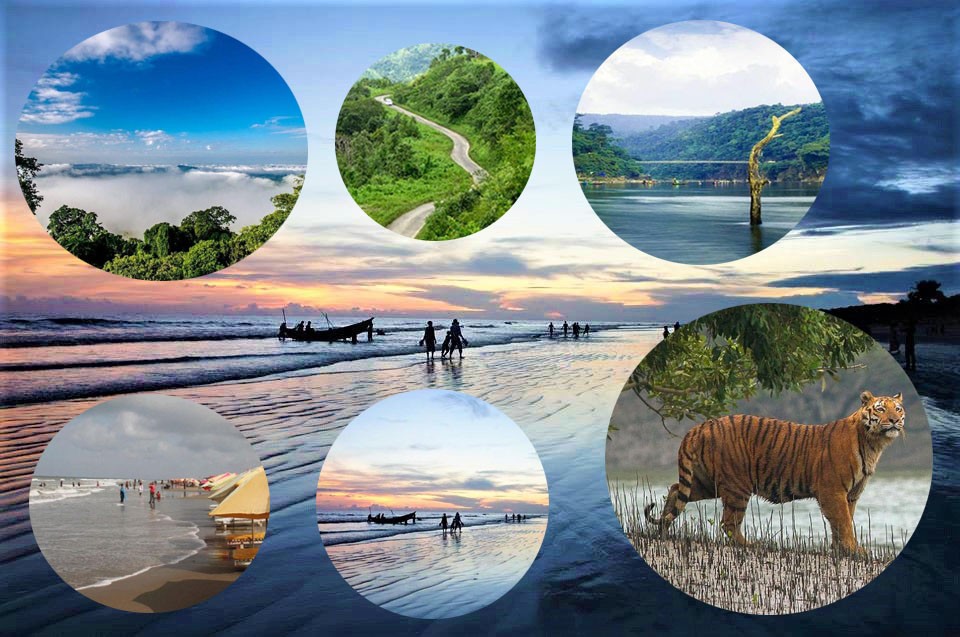History of Bangladesh- Tourist Spot, Population, & Facts History
Bangladesh History Overview
Bangladesh has a rich history dating back to the ancient kingdoms of the Indian subcontinent. The region that is now Bangladesh has been ruled by various dynasties and empires, including the Maurya, Gupta, and Pala empires, as well as the Mughal Empire. In the 18th and 19th centuries, the region was ruled by the British East India Company and later the British Raj. After gaining independence from British rule in 1947, East Pakistan (which later became Bangladesh) was part of Pakistan. However, East Pakistan and West Pakistan had significant political and economic differences, and in 1971, East Pakistan declared independence, leading to a war with West Pakistan and the formation of the independent nation of Bangladesh. Since then, Bangladesh has faced a number of political and economic challenges, but has also made significant progress in areas such as agriculture, industry, and education.
Bangladesh population
As of 2021, the estimated population of Bangladesh is around 164 million.
Bangladesh religion
The majority of people in Bangladesh are Muslim, with a minority of Hindus and other religious groups.
Bangladesh tourist spot
Bangladesh is a country located in South Asia and is known for its natural beauty, rich culture, and historical sites. Some popular tourist spots in Bangladesh include:
Cox’s Bazar: Known for its long sandy beach, this is the longest natural sea beach in the world.
Sundarbans: A UNESCO World Heritage Site and home to the Bengal tiger, this is the largest mangrove forest in the world.
Dhaka: The capital city of Bangladesh, known for its historical sites such as the Lalbagh Fort and the Ahsan Manzil palace.
Rangamati: A hilly district in the Chittagong Hill Tracts, known for its natural beauty, tribal culture and the Kaptai Lake.
Saint Martin’s Island: A small coral island in the Bay of Bengal, known for its coral reefs, beaches and marine life.
Rangamati: A hilly district in the Chittagong Hill Tracts, known for its natural beauty, tribal culture and the Kaptai Lake.
Sylhet: A divisional city of Bangladesh and home to the shrine of the Sufi saint Hazrat Shah Jalal, and the tea gardens of Srimangal.
Kuakata: A sea resort town on the southern tip of Bangladesh, known for its panoramic sea views and sandy beaches.
Sundarban mangrove forest : home of Royal Bengal Tiger and other wild animals.
Paharpur: An archaeological site of ancient Buddhist monasteries, known for its well-preserved ruins and historical significance.
Bangladesh Transport
Bangladesh has a well-developed transportation system, which includes various modes such as road, rail, water, and air transportation. The most widely used mode of transportation in Bangladesh is road transportation, which includes buses, taxis, and auto-rickshaws. The Bangladesh Road Transport Corporation (BRTC) operates a large fleet of buses that connect major cities and towns across the country. In addition, there are many private bus companies that also provide transportation services. Rail transportation is also an important mode of transportation in Bangladesh, with a network of trains connecting major cities and towns. Water transportation, particularly through a network of ferries and boats, plays an important role in connecting remote areas and islands. Finally, Bangladesh has several airports that provide air transportation services to major cities both within the country and internationally.
Bangladesh Liberation War
The Bangladesh War of Independence was a civil war in 1971 in which East Pakistan (present-day Bangladesh) fought for independence from West Pakistan. The war began on March 26, 1971, when the Pakistani military launched Operation Searchlight, a brutal crackdown on the Bengali nationalist movement in East Pakistan. India intervened on the side of the Bengali rebels in December 1971, and the war ended on December 16 of that year with the surrender of Pakistani forces. An estimated 1 million people were killed during the conflict and millions more were displaced. The war led to the formation of the independent nation of Bangladesh.







